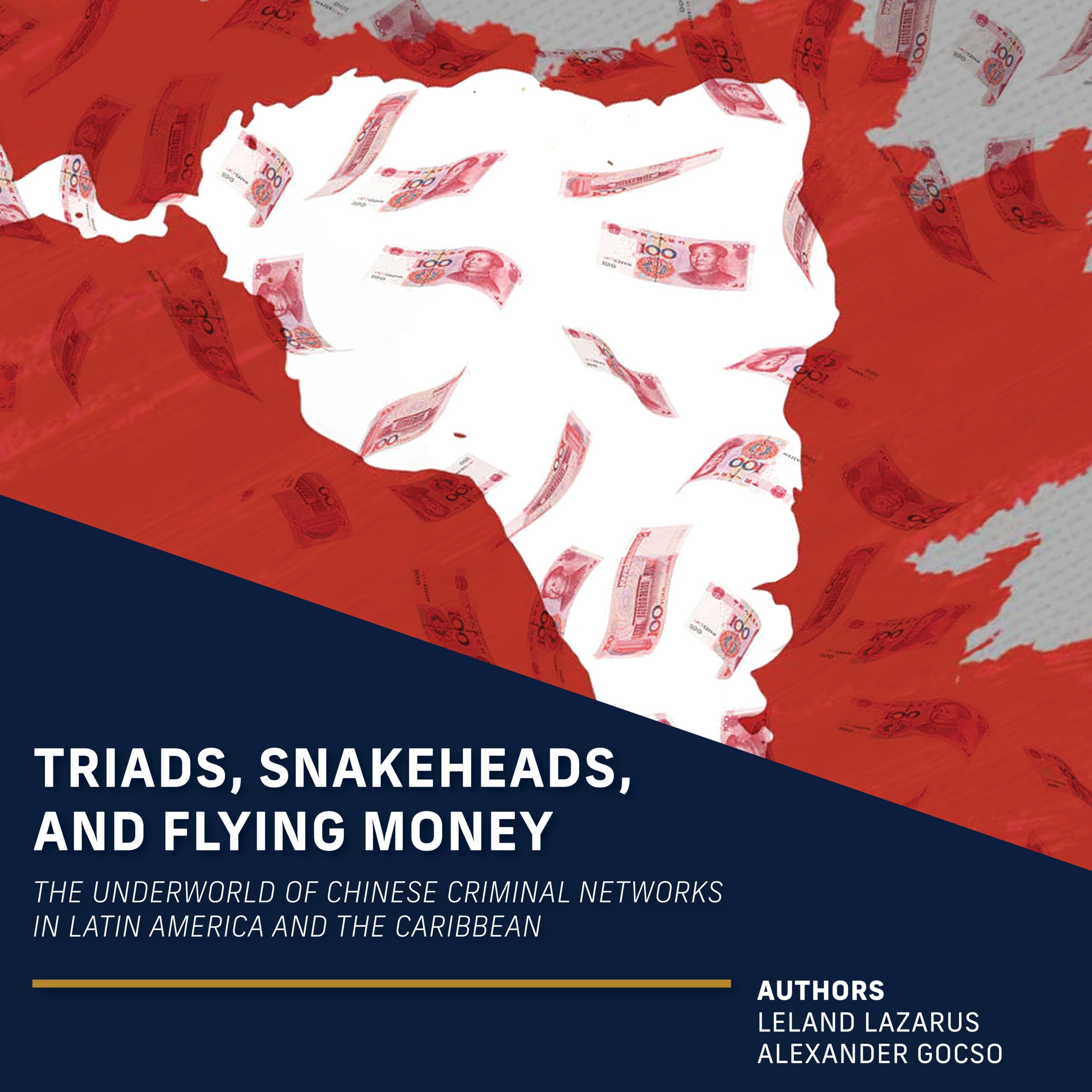Migration and the Threat of Extremism (Central America)
Topics / Spotlights
Irregular migration through Central America is increasingly shaped by Chinese nationals fleeing economic and political pressures, aided by transnational smuggling networks and shifting routes through Latin America and the Caribbean. Despite recent declines in U.S. border encounters, evolving tactics and regional instability continue to drive complex, adaptive migration flows that challenge security and humanitarian systems.
Irregular migration through Central America has become increasingly complex as global pressures intersect with regional instability and organized crime. Chinese nationals now make up a growing share of migrants transiting the Americas, using both established overland routes through countries like Ecuador and Colombia and emerging maritime paths through the Bahamas and Florida to avoid heightened enforcement at the U.S.-Mexico border. Their journeys are driven by a combination of economic stagnation, political repression, and tightening domestic controls in China. Facilitated by criminal smuggling organizations known as snakeheads, many Chinese migrants pay high fees for forged documents, legal coaching, and guided transit, often traveling along VIP routes protected by major drug cartels. These smuggling networks are part of broader Chinese criminal ecosystems in Latin America that also traffic drugs, launder money, and trade in illicit wildlife. Alongside this trend, migration from South American and Caribbean nations continues due to economic collapse, violence, and climate-related disasters. Countries such as Panama, Colombia, and Nicaragua remain critical bottlenecks and transit points but face serious limitations in infrastructure and political capacity. Despite a recent drop in U.S. border encounters attributed to policy changes and deterrence strategies, irregular migration patterns are increasingly adaptive, aided by social media platforms and mobile technology. These evolving dynamics present persistent security, humanitarian, and governance challenges across the hemisphere.


Recommended Reading
Marine Interdiction Agents with the Miami Marine Unit identified a suspicious vessel operating without navigation lights. When agents attempted to stop the vessel, the operator failed to comply. Agents initiated the Small Boat Interdiction Program (SBIP), deploying one marine warning round, which prompted the vessel to stop. Tony Kingham Border Security Report
Routes through the Bahamas have drawn interest over the past few years, though those patterns can be cyclical.
For Chinese migrants in particular, the number apprehended in Miami so far for fiscal year 2025, which began in October, has already reached almost three-quarters of what it was in 2024. Aarne Heikkila, Kimmy Yam NBC News
Another starting point is the port city of Turbo about an hour south of Necoclí that regained popularity in 2023 after it was largely unused for years.
Panamanian authorities have set up infrastructure to temporarily house migrants and provide them with basic services, but officials say more assistance is needed. Daniel F. Runde, Thomas Bryja CSIS
Since 2023, Colombians and Ecuadorians (along with nationals of some Central American and Caribbean countries) have been eligible for family reunification parole programs that allow people who have been approved for a family-based green card to enter and remain in the United States while they await their visa. Julian Montalvo, Jeanne Batalova Migration Policy Institute
The huge spike in Chinese people making the journey across the Darien – a journey now so popular it is known in Mandarin as “zouxian” or walking the line — has been driven by the Chinese government’s COVID-19 lockdowns, increasingly rigid rule and the recent flatlining of China’s once-imperious economy. Peter Yeung Aljazeera
Reemergence of claims to ethnic Chinese identity—a process of “re-Sinification”—is centering challenges to traditional notions of inclusion and identity in broader discussions of nationhood, multiculturalism, and ethnic and racial identities.
The growing economic development of the PRC and the greater ability of its citizens to travel abroad have led to a new wave of migration to Latin America. Migrants from provinces like Fujian and Zhejiang are using savings and credit to open businesses, especially restaurants and supermarkets. In Argentina, the number of Chinese-owned supermarkets has grown so much that some areas have restricted new ones. With one of the fastest growth rates in the world, China continues to export its population to Latin America where their presence now manifests through both embassies and large corporations, and through a continuous flow of professionals, students, and workers. Ariel C. Armony, Rosa Hassan De Ferrari University of Pittsburgh Press
About half of Chinese nationals interviewed at the U.S.-Mexico border said they had been small business owners in China: running online stores, a sheep farm, a movie production company. Others wore crosses and carried Chinese-language bibles, saying they were Christians who felt they could not freely practice their religion at home. China’s constitution guarantees religious freedom, but in recent years critics including the U.S. government say Beijing has tightened restrictions on religions seen as a challenge to the authority of the Communist party. Echo Wang, Mica Rosenberg Reuters
Our results contradict the notion that economic sanctions would increase migration flows to the United States. In fact, the data shows the opposite relationship: when Venezuela’s oil income decreases (as would be expected under stricter sanctions), migration flows also tend to decrease. Dany Bahar, Ricardo Hausmann Center For Global Development
The number of migrants crossing the Darién Gap between Colombia and Panama plummeted to just over a dozen per day in February, as fears of stricter US immigration policies under the administration of President Donald Trump have deterred new crossings. The vast majority of those returning are Venezuelans, according to Colombia’s Foreign Ministry, which reported that 1,885 migrants arrived in Colombia from Panama between January 15 and February 28. Henry Shuldiner, Sara Garcia Insight Crime
There have also been sharp decreases in encounters with citizens of other countries, including some that historically have not been common origin nations for migrants crossing the U.S.-Mexico border:
Encounters with citizens of China fell 75% from 5,591 to 1,472.
Encounters with citizens of Venezuela plunged 99% between December 2023 and August 2024, from 46,918 to 626.
Encounters with citizens of Haiti fell 97%, from 1,392 to 46.
Encounters with citizens of Nicaragua fell 96%, from 8,176 to 297.
Encounters with citizens of Peru fell 95%, from 5,742 to 312.
Encounters with citizens of Ecuador fell 84%, from 16,951 to 2,676.
Encounters with citizens of Colombia fell 80%, from 17,874 to 3,531.
Encounters with citizens of Cuba fell 98%, from 4,964 to 104. John Gramlich Pew Research Center
In terms of mobility due to internal displacement, the American continent has registered new movements caused by conflicts and various catastrophes (e.g., in Haiti, during October and November, violence in the West Department forced more than 18,000 displacements, including 8,000 due to crime-related violence in the metropolitan area of Port-au-Prince and another 10,000 due to land conflicts in the municipality of Arcahaie).
Latin America and the Caribbean recorded an 8 percent increase in remittances received in 2023, surpassing other regions such as Asia and SubSaharan Africa with 1.9 percent, according to World Bank data (World Bank, 2024).
Oct 01, 2016 — Chinese Migration to Latin America and the Caribbean: This report makes note of an increase in permanent Chinese migration to LAC following the post-1985 loosening of Chinese exit rules, followed by an uptake in often temporary flows post-2005, in association with growing Chinese investment in the region.
With the liberalization of Chinese exit rules during China’s era of “reform and opening-up,” (1979) many Chinese migrants traveled to Latin America and the Caribbean on their own to work or to establish businesses. This independent migration was focused on the services sector (e.g., shops and restaurants) and on work in fisheries.
An urgent memo published in 2015 by China’s Ministry of Foreign Affairs, Ministry of Commerce, and State-Owned Assets Supervision and Administration Commission (SASAC) indicated that labor and capital disputes have the potential to negatively affect local populations, China’s own business interests, and China’s overseas image. Chinese statistics indicate a decline in labor export globally in recent years, although official LAC statistics have increased marginally.
Jacqueline Mazza
Interactive Dashboards & Datasets
This interactive dashboard also presents official government data known as administrative data. Specifically, it features irregular migration data from the governments of Panama and Honduras, and regular migration data from Costa Rica, Panama, Mexico, Honduras and the Dominican Republic. IOM UN Migration IOM UN Migration
The second offers dashboard visualizes data collected the International Organization for Migration’s (IOM’s) Displacement Tracking Matrix (DTM). This database provides multi-layered information on the mobility, vulnerabilities, and needs of displaced and mobile populations.
Podcast and Videos
An upcoming report, co-authored by CSIS’s Human Rights Initiative and the Project on Fragility and Mobility, analyzes the use and exportation of migration management technologies by origin countries, as well as the human rights risks associated with these uses. It then provides recommendations for origin, transit, and destination governments as well as businesses supplying technology for migration management. Badara Ndiaye, Amal El Ouassif, Caterina Rodelli, Erol Yayboke, William Brownsfield, Oscard Chacon, Angela Alarcon, Marti Flacks CSIS


